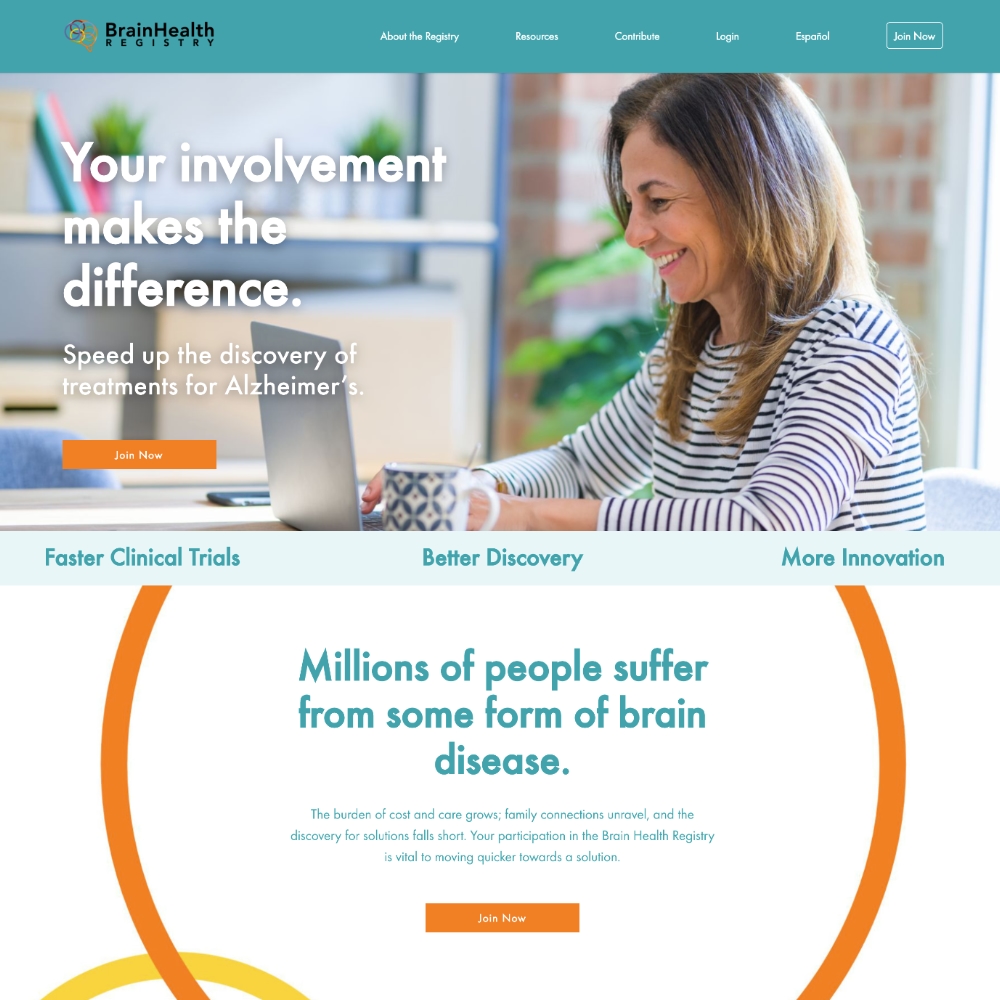See how Alaniz helped UCSF Brain Health Registry attract thousands of underrepresented participants to their study.
UCSF Brain Health Registry
Speeding up the discovery of treatments for Alzheimer’s.


CASE STUDY

The Problem
Health disparities are common in the field of science, so it’s no surprise that the Brain Health Registry was faced with the obstacle of getting more participants from the Latino community. The goal of this study was two-fold. Firstly, we needed to enroll 10,000 members in the registry. Secondly, we needed to recruit 5,000 Latinos to volunteer in the Brain Health Registry study. Reaching, engaging, and building trust within this community were milestones that we not only achieved but exceeded.
The Solution
To overcome this challenge, we collaborated with members of the Latino community and crafted authentic messaging that resonated with our audience. Our advertisements, email, social media, and grassroots campaigns allowed us to not only reach but exceed our goal of enrolling 10,000 members in the registry and we are en route to reaching our goal of recruiting 5,000 Latino participants to the study. In addition, the data we provided to our scientists allowed them to write academic articles to support further research that is needed in the field of brain health and the registry is being used for other studies. Moreover, we successfully engaged with the Latino community to spread awareness of the need for inclusion in brain health research. Moreover, we were able to tip the scales and include more underrepresented groups in the study of brain health.

Stylescapes




The use of a 7-color palette and circle patterns in the CEDAR brand identity was chosen for several reasons. First, the colors were carefully selected to evoke different emotions and associations, with blue representing trust and calmness, green symbolizing growth and health, and orange conveying energy and enthusiasm, among others. The circle patterns were included to create a sense of movement, fluidity, and continuity, highlighting the ongoing nature of Alzheimer’s and dementia research.
The use of multiple colors and patterns also allows for flexibility and versatility in the brand identity, enabling different color combinations and design variations to be used in various contexts while maintaining consistency and recognition. Overall, the use of a 7-color palette and circle patterns reflects the complexity and diversity of the initiative’s goals and represents the vibrancy and dynamism of the Black/African American community.

